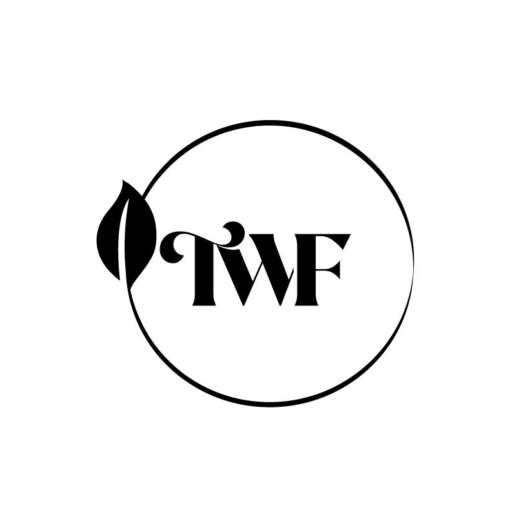Let’s first start off with the disclaimer that Stella McCartney is the fairy godmother of sustainable luxury fashion. No, she is not the first luxury fashion designer to plant the seeds for green initiatives. And, we lift our hands to the gods of clean air and drinking water that she won’t be the last. But, she has bellowed the loudest battle cry against the unethical aspects of the fashion industry since she staged her first vegetarian collection in 2001. Since then, her eponymous fashion house has blossomed as a sustainable fashion brand. McCartney has evolved, collaborated, and redefined her design and manufacturing strategies to make her brand year after year to be more eco-friendly and humane. And, in the spirit of transparency, McCartney began publishing its sustainability reports in 2016.
Each decision we make is a symbol of our commitment to defining what the future of fashion looks like. From never using leather or fur and pioneering new alternative materials to utilising cutting edge technologies, pushing towards circularity, protecting ancient and endangered forests and measuring our impact with ground-breaking tools.

Using The Right Raw Materials
Changing your lifestyle begins by addressing current actions and focusing on ways to improve them. When McCartney first opened the doors to her luxury fashion house, she operated on the same ethos that all luxury fashion houses aspired to- innovative designs, opulent materials, and shows that are a feast for the imagination. Yet, as fashion began to usher in a new era of conscious and ethical decisions, old ways were reexamined and changed to support a sustainable lifestyle. Opulence was re-examined with sustainability in mind. Designs leaned towards eco-friendly initiatives. And, as for the fashion stage itself, well that was completely reimagined as a platform to raise our voice for the survival of the environment. In 2014, the brand became aware that cashmere represented 0.1% of the material used, but 42% of their “total environmental impact at the raw material stage.” By 2016 they reduced this impact to 11% by using re-engineered cashmere yarn in place of virgin cashmere.
Recycled polyester has a 75% lower carbon footprint than virgin polyester and uses up to 90% less water. In 2016, we increased the amount of recycled polyester we use by 38% and introduced recycled nylon into our collections.
When McCartney debuted her Spring / Summer 2020 collection, it was a ‘plea for the environment’. A parade of beautiful luxurious clothes made from ‘zero impact fabrics’ strutted down the runways. Recycled polyester and upcycled denim were draped into delicate dresses and breezy jumpsuits. Under each seat, guests were greeted to an “Eco-Manifesto”, a detailed timeline of McCartney’s dedication to being a sustainable fashion brand.
Working With The Right People
Read the McCartney label and you’ll notice that Italy, Hungary, Spain, and Portugal are popular destinations in the McCartney supply chain. In fact, 76% of all manufacturing factories and suppliers are in Italy. Why is this important? These countries often have higher (and fairer) wages and better working conditions. Yet, it’s not a guarantee. Expected (and unexpected) audits are performed by the Kering team to underline any potential risks to workers. Kering owns Gucci, Brioni, Balenciaga, Bottega Veneta. As the mother company, it is holding its brands accountable to meet ethical standards.
In cases where our suppliers find it difficult to complete the remediation work identified through audits, we invite them to participate in supplier improvement projects.
2016 Sustainability Report
In 2016, McCartney published its first Sustainability report. All eight pages can be read online here. It focuses on six core areas- pollution, greenhouse gas emissions, land use, waste, water consumption, and water pollution- to asses the brand’s impact. And, that’s measured through Environmental Profit and Loss (EP&L). To give you an example of how EP&L is measured, the balance for water pollution during the ‘Raw Material Production’ stage was €1,295 pollution. In the assembly line, water pollution was just €9. In fact, when you look at the other five areas, raw material production was the biggest polluter. Reacting to this data, McCartney launched a line of backpacks made from recycled nylon and began to focus on reducing new raw materials.
A Sustainable Timeline
2001: The House of Stella McCartney is established and becomes the 1st vegetarian luxury brand.
2003: All locations in the UK use renewable energy.
2005: Organic Denim is offered.
2007: Care, by Stella McCartney, a skincare line is launched and pledges to use only 100% organic active ingredients.
2010: First Carbon Offset with Wildlife Works is launched.
2012: Uses Apinat, a biodegradable rubber.
2013: Lining of all Falabella bags switches to recycled polyester, created from recycled plastic water bottles.
2016: Publishes its first Environmental Profit and Loss (EP&L) report.
2017: Makes select Falabella bags from Econyl, a yarn fiber made from recycled fishing nets and nylon waste.
We still have much work to do towards reducing the negative impacts we have on the environment. We will do this by working closely with our suppliers and collaborating with our peers and industry partners (such as Canopy and the NRDC). However, our decision to not use leather in our products already gives us a head start.

